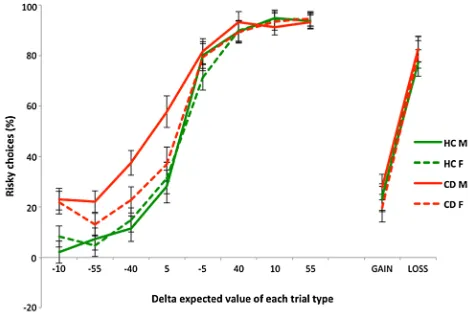Sex differences in risk-based decision making in adolescents with conduct disorder
Full text
Figure



Related documents
Taking into account that AhR expression promotes differentiation in different cell types ( Esser and Rannug, 2015; Mulero-Navarro and Fernandez-Salguero, 2016 ), and
Further experimentation should seek to compare the MRMR-ILS with other mutual information based hybrid methods from the wider feature se- lection literature, and investigate
For instance, this tool was used to view the number of packets processed and dropped per unit of time, the average packet transit delay at the IP layer, and the average and
No significant differences were found in students’ Force Concept Inventory (FCI) test scores; however, average homework performance scores were significant that could
From the time of the Marland Report (U.S. Senate, Labor & Public Welfare,1972), the first publication to identify the need to increase the participation of
The T-test was used to determine the effect of the student-centered learning approach in the experimental group as against the use of the traditional method
Select the correct answer and then mark you r selection on your answer sheet...
Our idea was, to provide an contact list grouped by specific responsibilities (e.g. DATEX II extension, new services, groups by the different DATEX II publications, data types